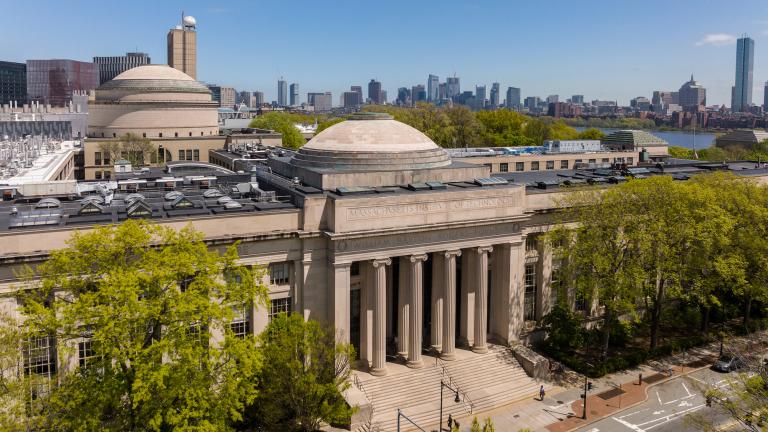
Launched this month, MIT’s new Bachelor of Science in climate system science and engineering is jointly offered by the departments of Civil and Environmental Engineering (CEE) and Earth, Atmospheric and Planetary Sciences (EAPS). As part of MIT’s commitment to aid the global response to climate change, the new degree program is designed to train the next generation of leaders, providing a foundational understanding of both the Earth system and engineering principles — as well as an understanding of human and institutional behavior as it relates to the climate challenge. Jadbabaie and Van der Hilst discuss the new Course 1-12 multidisciplinary major and why it’s needed now at MIT.
Q: What was the idea behind launching this new major at MIT?
Jadbabaie: Climate change is an incredibly important issue that we must address, and time is of the essence. MIT is in a unique position to play a leadership role in this effort. We not only have the ability to advance the science of climate change and deepen our understanding of the climate system, but also to develop innovative engineering solutions for sustainability that can help us meet the climate goals set forth in the Paris Agreement. It is important that our educational approach also incorporates other aspects of this cross-cutting issue, ranging from climate justice, policy, to economics, and MIT is the perfect place to make this happen. With Course 1's focus on sustainability across scales, from the nano to the global scale, and with Course 12 studying Earth system science in general, it was a natural fit for CEE and EAPS to tackle this challenge together. It is my belief that we can leverage our collective expertise and resources to make meaningful progress. There has never been a more crucial time for us to advance students’ understanding of both climate science and engineering, as well as their understanding of the societal implications of climate risk.
Van der Hilst: Climate change is a global issue, and the solutions we urgently need for building a net-zero future must consider how everything is connected. The Earth’s climate is a complex web of cause and effect between the oceans, atmosphere, ecosystems, and processes that shape the surface and environmental systems of the planet. To truly understand climate risks, we need to understand the fundamental science that governs these interconnected systems — and we need to consider the ways that human activity influences their behavior. The types of large-scale engineering projects that we need to secure a sustainable future must take into consideration the Earth system itself. A systems approach to modeling is crucial if we are to succeed at inventing, designing, and implementing solutions that can reduce greenhouse gas emissions, build climate resilience, and mitigate the inevitable climate-related natural disasters that we’ll face. That's why our two departments are collaborating on a degree program that equips students with foundational climate science knowledge alongside fundamental engineering principles in order to catalyze the innovation we’ll need to meet the world’s 2050 goals.
Q: How is MIT uniquely positioned to lead undergraduate education in climate system science and engineering?
Jadbabaie: It’s a great example of how MIT is taking a leadership role and multidisciplinary approach to tackling climate change by combining engineering and climate system science in one undergraduate major. The program leverages MIT’s academic strengths, focusing on teaching hard analytical and computational skills while also providing a curriculum that includes courses in a wide range of topics, from climate economics and policy to ethics, climate justice, and even climate literature, to help students develop an understanding of the political and social issues that are tied to climate change. Given the strong ties between courses 1 and 12, we want the students in the program to be full members of both departments, as well as both the School of Engineering and the School of Science. And, being MIT, there is no shortage of opportunities for undergraduate research and entrepreneurship — in fact, we specifically encourage students to participate in the active research of the departments. The knowledge and skills our students gain will enable them to serve the nation and the world in a meaningful way as they tackle complex global-scale environmental problems. The students at MIT are among the most passionate and driven people out there. I'm really excited to see what kind of innovations and solutions will come out of this program in the years to come. I think this undergraduate major is a fantastic step in the right direction.
Q: What opportunities will the major provide to students for addressing climate change?
Van der Hilst: Both industry and government are actively seeking new talent to respond to the challenges — and opportunities — posed by climate change and our need to build a sustainable future. What's exciting is that many of the best jobs in this field call for leaders who can combine the analytical skill of a scientist with the problem-solving mindset of an engineer. That's exactly what this new degree program at MIT aims to prepare students for — in an expanding set of careers in areas like renewable energy, civil infrastructure, risk analysis, corporate sustainability, environmental advocacy, and policymaking. But it's not just about career opportunities. It’s also about making a real difference and safeguarding our future. It’s not too late to prevent much more damaging changes to Earth's climate. Indeed, whether in government, industry, or academia, MIT students are future leaders — as such it is critically important that all MIT students understand the basics of climate system science and engineering along with math, physics, chemistry, and biology. The new Course 1-12 degree was designed to forge students who are passionate about protecting our planet into the next generation of leaders who can fast-track high-impact, science-based solutions to aid the global response, with an eye toward addressing some of the uneven social impacts inherent in the climate crisis.






